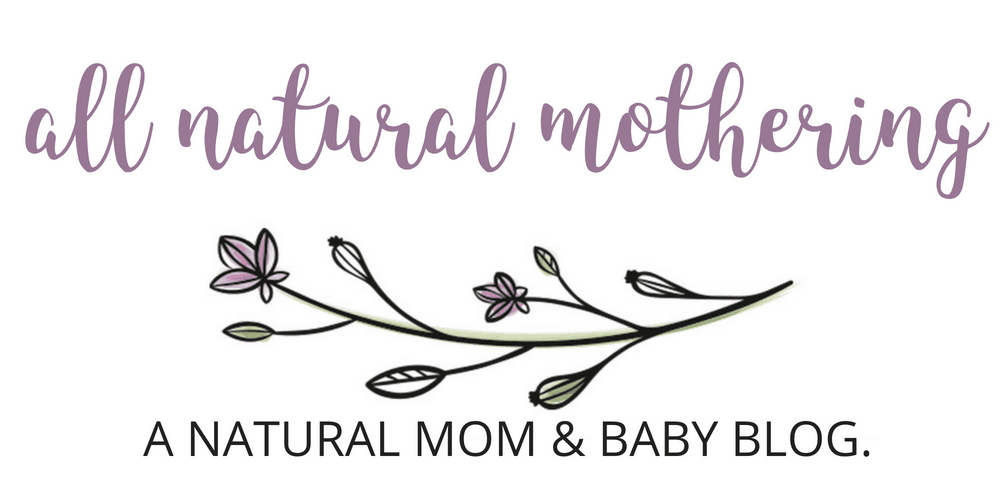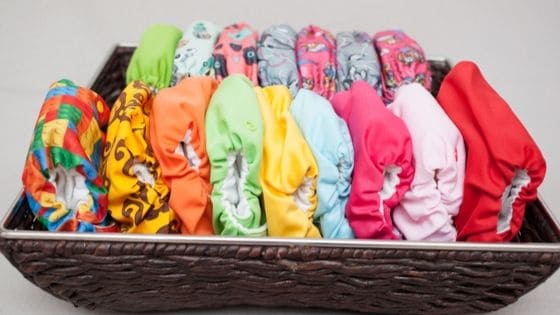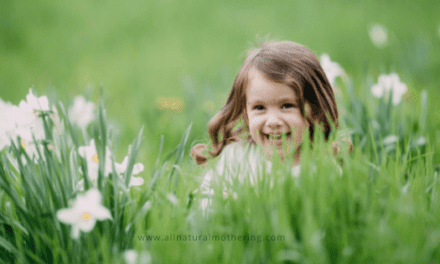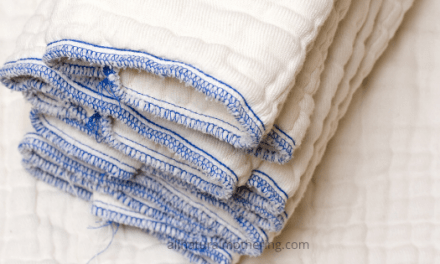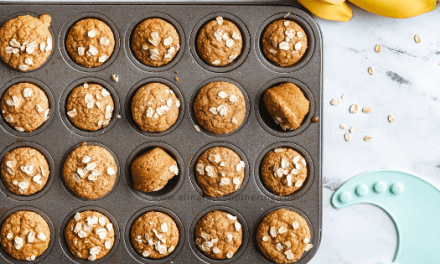Deciding the best cloth diaper type to buy for your baby can be a difficult choice.
There are a lot of different cloth diaper types, each has their own appealing features.
A cloth diaper style that suits one baby and family may not work for everyone.
With so many options to consider it can be overwhelming and time consuming to nail down on one.
In this post I will explain the main types of cloth diapers, discuss the pros and cons of each cloth diaper style to help you make your mind.
To understand different cloth diapers, you first need to understand the two main cloth diaper parts.
The various cloth diaper types you see in the market is a result of the combinations of these two components.
1.A waterproof outer layer –
The waterproof outer layer can be attached with the absorbent material (in case of All In One diapers) or can come as a separate cover ( in case of pockets, hybrids and diaper covers).
The cover can be made of Poly Urethane Laminate (PUL) or Thermo-plastic Poly Urethane (TPU). The difference between PUL and TPU comes from how the plastic is bonded to the fabric.
If you are not a fan of synthetic materials, then a natural diaper cover option to try are Wool Covers.
2.Absorbent Inner core-
Just like disposable diapers, cloth diapers also come with absorbent layers that wicks the urine.
In case of two part cloth diapering systems ( like pockets, covers and hybrids) the absorbent material comes separately and needs to be snapped or folded inside the outer waterproof cover.
The absorbent material comes in different shapes and fabrics that accounts for the differences in the cloth diapering systems we see. The absorbent material is also loosely called as an insert.
The different materials you can come across as cloth diaper inserts are cotton, bamboo and hemp.
Flat Diapers:

Flats are your grandma’s diapers.
They are often considered old school but they are very versatile. They are the cheapest type of cloth diaper to consider if you are looking for a budget friendly option.
Flats are a square piece of fabric commonly made of cotton. But these days you can find flats made of hemp and cotton blend.
Flats can be folded in various ways, pinned using diaper fasteners and used within a waterproof diaper cover.
Pros:
- They are very easy to wash and clean as they are made of single layer of fabric. They are especially great if you are hand washing diapers.
- They also dry faster and can be dried even on a clothesline.
- They are the cheapest cloth diaper option you can buy. You can build a entire cloth diaper stash with flats and covers with only 100 dollars ( even cheaper if you buy used)
- They can be made to fit any baby’s size and weight as they can be folded in different ways.
Cons
- Flats are not the simplest type of cloth diaper especially for cloth newbies. There is a bit of learning curve involved to work your through mastering flats.
- Flat diapers are not the most user friendly for other care givers. It can be hard to convince your partner or family to use flats as they might feel intimated by the different ways it should be folded or using fasteners like snappi.
- Flats are a two part cloth diaper system. You need to first fasten the flats and then put a cover over it. If you have a squirming baby then this can take forever.
- If you have a heavy wetting baby, some parents need a more absorbent options (discussed below)
Prefolds
Prefolds are one step higher to flat diapers. As the name goes, multiple layers of absorbent materials are sewn together into to a rectangle fabric which has 3 sections.
Pre-folds are generally denoted as 4x8x4 which represents the number of layers in each section.
The middle section is made of 8 layers of fabric and the other two sections has 4 layers.
Prefold come in a variety of fabrics – cotton ( light to medium wetters) , bamboo ( medium to heavy wetters) and hemp ( heavy to heaviest wetters)
Prefold diapers come in different sizes ranging from newborn, infants to toddlers.
Pros
- Prefolds are easier to use than flats as they are smaller in size and come pre folded.
- Prefolds are a cheaper cloth diaper system when compared to other expensive options like all in ones’s (discussed below)
- Prefolds come in various fabric like cotton, bamboo and hemp giving you the choice to choose your absorbency that your baby needs. Many parents start with cotton pre folds and turn to hemp or bamboo if they need higher absorbency.
- Prefolds are very durable and they last for multiple kids. They can be used as kitchen towels and rags once you are done cloth diapering.
Cons
- Even though they are better than flats they are still not the most easiest style of cloth diaper to use.
- Prefolds are sized and you would need to upgrade and buy new sizes as your baby grows.
- Other family members or caregivers may find it difficult to use prefolds as they need to be folded or pinned and laid over a cover.
Fitted Diapers
Fitted diapers are also known as work horse diapers and are hugely popular for their abundant absorbency.
Fitted diapers look like a complete cloth diaper with rise snaps to adjust the height, snap or velcro closure and elastics around the hip and thighs for a snug fit. Nevertheless, they are still a two part diaper system and you need to pair them with a cover.
They come in both sized as well as one size options, you can choose whichever best suits your needs and budget.
Pros:
- Unlike other cloth diaper types, fitted diapers offer absorbency all over your baby’s bum. Fitted diapers does an excellent job of absorbing pee if you have a side sleeper or tummy sleeper.
- They make a great night time diaper or regular day time diaper for a heavy wetter.
- Some fitted diapers are sized but there are also some great One size options available
- They come is different absorbency with cotton being the least absorbent (still works for a light to medium wetting infant), bamboo ( medium to heavy wetter) and hemp ( for the heaviest of the heavy wetter)
Cons:
- Since fitted diapers has many layers of a absorbency stitched into a single diaper, they take a long time to dry. They also have a potential to trap ammonia and need a solid wash routine to get them clean thoroughly .
- Fitted diapers are expensive then other two part system like prefold and flats.
- Again a two part diaper system which many parents aren’t thrilled to use.
Pocket Diapers:

Pocket diapers are my favorite style of cloth diapers. I love them for their customizable absorbency.
Basically, these are two part diapers – the outer cover, called the pocket shell, comes with an opening to stuff the absorbent insert.
The pocket shell has two sides, the outer waterproof side made of PUL or TPU. The inner side that touches your baby’s skin can be made of synthetic or natural fibre.
When synthetic materials like micro-suede or micro fleece is used, the pocket is said to have a ‘stay-dry’ liner. These stay dry materials are excellent to keep moisture away from your baby and make them feel dry.
However, some babies are sensitive to synthetic fabrics and tend to have allergies. In such cases, parents prefer to use pockets made of natural fibers like cotton or bamboo.
Most pocket diapers come with an attached inserts. In many cases, the accompanying insert is microfibre as they are cheap. Microfibre is quick in wicking liquid but doesn’t hold much urine inside.
For this reason, many parents, myself included, switch to bamboo or hemp inserts.
As I mentioned earlier, the biggest plus about pocket diapers is that you can customize its absorbency.
You can choose any type of insert (from any other brand) and stuff it inside a pocket diaper.
Pros:
- Pocket diapers are one of the most customizable cloth diaper option.you can pretty much use any type of inserts you wish from the cheapest flour sack towels to the expensive hemp inserts.
- The outer layer ( the part that lays next to your baby’s skin) has a feel dry layer made of microsuede or microfleece that will trap the mositure inside and leaves your baby feeling dry
- Pocket diapers come in sized as well as one size options
- Pocket diapers are more user friendly than prefolds and flats. Once stuffed, they are pretty much like ready to use all in ones.
Cons:
- Requires folding and stuffing inserts.
- If your own multiple brands it can get confusing to track down which inserts belong to which pocket cover.
- Depending on how you stuff your diapers, pocket diapers may look bulky.
- Can be expensive. Most cheaper pocket diaper options come with a microfiber inseet that most babies grow out off soon. Buying bamboo or hemp inserts can take your cloth diapering costs up ( although these inserts have higher resale value)
- You would have to remove the insert before you dump them in the machine.
All In Two/Hybrid Diapers:

All in Two diapers has a diaper shell and a insert (called as soaker) that can be snapped or laid upon the cover. The diaper shell can only come with a PUL lining ( like Best Bottoms) or have a fabric lining (like Grovia).
Hybrid diapers are similar to AI2’s except you can either you reusable or disposable inserts with the diaper shell. Grovia hybrid diapers are one of the most popular one’s which comes with cloth or disposable soakers. Disposable soakers are great while traveling or when you are out on a vacation.
An AI2 diaper shell can be wiped down and reused multiple times making it a cheaper option. You can reuse the shell thrice if it is not soiled. This way you can do away with fewer shells in your stash.
Pros:
- AI2’s can save you money. Typically, you will need one diaper shell for every 3 insert which works out cheaper than pockets or All In One diapers.
- AI2’s offer customized absorbency. You can any type of insert you would want. You can even choose between a cloth or a disposable insert by buying hybrid diapers.
- The diaper shell and the insert can be taken apart which makes AI2’s easier to wash.
- They are also faster to dry than an AIO.
Cons:
- AI2’s are still a two part cloth system that needs assembly.
All In One Diapers:

All In Ones are one part diapering system where the insert and the waterproof cover are sewn in together. There is no headache of stuffing or folding inserts.
It is a ready to go diaper that works just like using a disposable diaper.
These days you can see a lot of variations in an All In One diaper – AIO that has a snap-in insert, AIO with a pocket, etc.,
Pros
- Closest to using disposable diapers. No snapping or stuffing absorbency. It is an one piece diapers that goes on your baby like a disposable diaper.
- There are many trim AIOs that will fit under your baby’s jeans
- Easier to use for dads, grandparents and babysitters
- They are great for short trips and travelling as well. You can just pop aios in your bag and they are ready to use on the go.
Cons
- All in Ones can be expensive. On a average a regular daytime diaper can cost around 25$ . If you want a night time all in one it can cost around 40$.
- The main problem with aio is you cannot customize their absorbency. Nowadays aio diapers come with a pocket opening or a provision to snap in a extra booster to add more a absorbency.
- Typically multiple layers of inserts are sewn in together making it harder to clean and aios take longer to dry as well.
Final Word:
As you can see, each cloth diaper type has its own set of pros and cons. Choosing the right cloth diaper depends on your budget, your baby’s need and how comfortable you are with handling cloth diapers.
If ease of use is your primary concern, then it cannot get easier than using AIO diapers that goes on just like disposable diapers.
If you are all about saving money, then using flats/prefolds with diaper covers will get you the most bang for your buck.
I always recommend a mixed stash when you are starting out because preferences change. Personally, my stash mostly consists of prefolds, diaper covers, pockets and AI2’s. Oh, I have a few fitted diapers exclusively for the night time.
Do you have a favorite cloth diaper type? Dis this post help you understand the different cloth diaper styles? Leave a comment to let me know.
